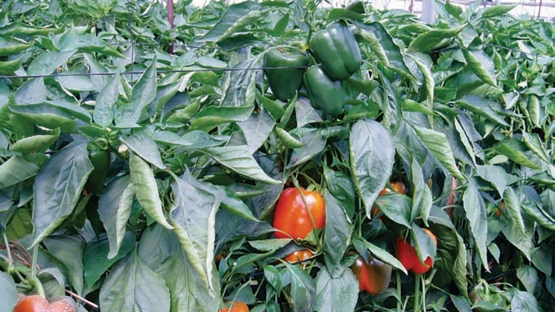Scientists, politicians, and farmers from Israel, Jordan and the Palestinian Authority are winning a long but largely invisible fight. Their common foe: the Mediterranean fruit fly, or medfly, one of the world’s most destructive agricultural pests. Among their allies: the Joint FAO/IAEA Division of Nuclear Techniques in Food and Agriculture and the tools of nuclear science and technology. The result of this unique joint activity in the region is higher production, lower use of pesticides, and increased fruit and vegetable production for local markets and for export.
In this region where military no-fly zones typically rule, a plane loaded with a unique cargo of 7 million sterilized male flies makes a two-hour flight between the Red Sea and the Dead Sea. It is the only plane authorized to fly freely in this region.
Twice a week, this unlikely “fly bomber” releases millions of sterile males into the air, allowing them to swarm into the Arava/Araba Valley shared by Israel and Jordan. The medflies are bred for birth control so any mating of these sterile males with wild virgin females of the pest populations yields no offspring. If left to multiply in the wild, medflies wreak havoc on citrus and many other fruits and vegetables, quickly turning crops into infested mush.
Scientists call this pest-control technology the sterile insect technique (SIT). It is an environmentally friendly method, with a basic “birds and bees” concept. No offspring means a dwindling fly population over time, through systematic and targeted campaigns combined with other strategic measures on an areawide basis.
That’s what is happening in the Arava/Araba Valley, using a pest to fight a pest, with a unique and winning partnership between Israel and Jordan. The Joint Division has supported the project since the mid-1990s, and is currently expanding to other areas which also include the Palestinian Authority.
For Israeli farmers, success means they can sell produce, such as bell peppers, to lucrative export markets such as the United States, where imported fruit and vegetables must come from fruit-fly-free areas. The bell peppers are grown inside enormous greenhouses – cool oases of reds and oranges on lush green plants – that dot the desert landscape. The SIT programme has helped convince tough regulators in the USA and elsewhere that the Arava/Araba Valley’s production is free of infestation.



